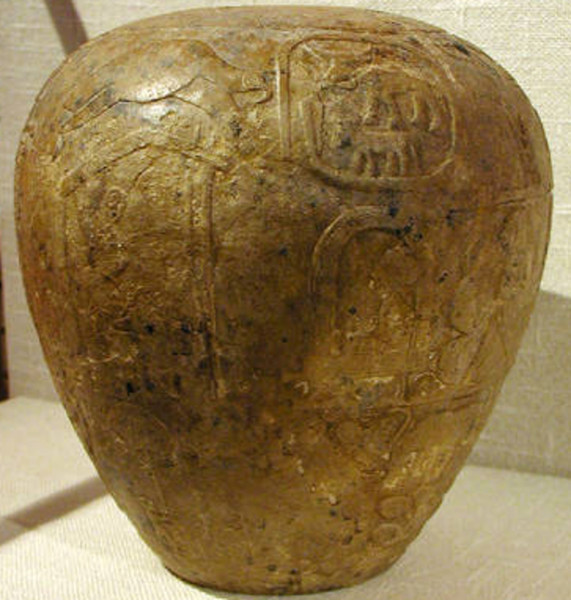
Narmer (Mernar) was a ruler of Ancient Egypt at the end of the Predynastic Period and the beginning of the Early Dynastic Period. He is often credited with uniting Egypt and becoming the first king of Upper and Lower Egypt. There is some direct evidence for this from near contemporary sources. Seal impressions found in the Abydos tombs attributed to the Pharaohs Den and Qa’a provide us with an ancient list of kings and in both cases Narmer is recorded as the first pharaoh.
Freidman (1995) has also noted that the earliest inscribed stone vessel found in the Step Pyramid of Djoser dates to the reign of Narmer and she proposes that Djoser had those vessels placed in his tomb to stress his link with the founder of pharaonic Egypt.

According to Manetho and Herodotus the first Pharaoh of Ancient Egypt was Menes. Many experts consider that Menes and Narmer are the same person (Petrie 1916, Lloyd 1994, Cervello-Autuori 2003). To confuse the issue further, many historians now argue that Scorpion and Narmer are one and the same, but so far no evidence has been discovered to prove or disprove this theory.
It was once thought that he was married to Neithhotep. Petrie suggested that she was a Lower Egyptian (northern) princess who he married to consolidate his rule but according to Wilkinson (1999) Neithhotep was from Upper Egypt and there is no evidence that Narmer did marry a princess from the north. Neithhotep’s name also appears on inscriptions found in tombs thought to belong to Hor-Aha and Djer and it is possible that she was the mother of Hor-Aha. However, inscriptions found at Wadi Ameyra at Sinai in 2016 suggest that she was the mother and co-regent of Djer.


A number of artefacts from his reign have been unearthed, such as inscribed potsherds and seal impressions from the First Dynasty tombs of Den and Ka at Abydos. Narmer’s name and that of his (possible) predecessor Scorpion have also been found on pottery found in Minshat Abu Omar (in the eastern delta) and he is referenced on an inscription on a jar found in Tell Ibrahim Awad (in the north eastern delta area).


Pottery bearing Namer’s name has been found on several sites in southern Palestine (En Besor, Rafia, Tel Erani, and Arad). The “main deposit” found in the temple of Nekhen (Hierakonpolis) by Quibell and Green included a statue of a Baboon with Namer’s name on it as well as the famous Narmer Macehead and Narmer Palette.

The “Narmer Tablet” (above) was found in Tomb B18. It features the serekh of Narmer (on the right) and the hieroglyph indicating a fortified town (the oval with fortifications around it). The hieroglyphs inside the oval presumably represent the name of the town. Petrie read the first sign as a “s” but the meaning of the second sign is unknown.
Tombs B17 and B18 (two linked chambers) in Umm el-Qa’ab, Abydos are generally attributed to Narmer. These tombs are rather small and so it is possible that Narmer’s tomb is still hidden beneath the sands of Abydos awaiting discovery (Wilkinson 2000).

Pharaoh’s Names
Bibliography
- Kathryn Bard (2008) An introduction to the Archaeology of Ancient Egypt
- Peter A Clayton (1994) Chronicle of the Pharaohs
- A. Dodson and D. Hilton (2004) The Complete Royal Families of Ancient Egypt
- Barry J Kemp (1991) Ancient Egypt: Anatomy of a Civilisation
- Toby A H Wilkinson (1999) Early Dynastic Egypt
- Toby A H Wilkinson (2000) What a King Is This: Narmer and the Concept of the Ruler from The Journal of Egyptian Archaeology
- Hilary Wilson (1997) People of the Pharaohs
Copyright J Hill 2016